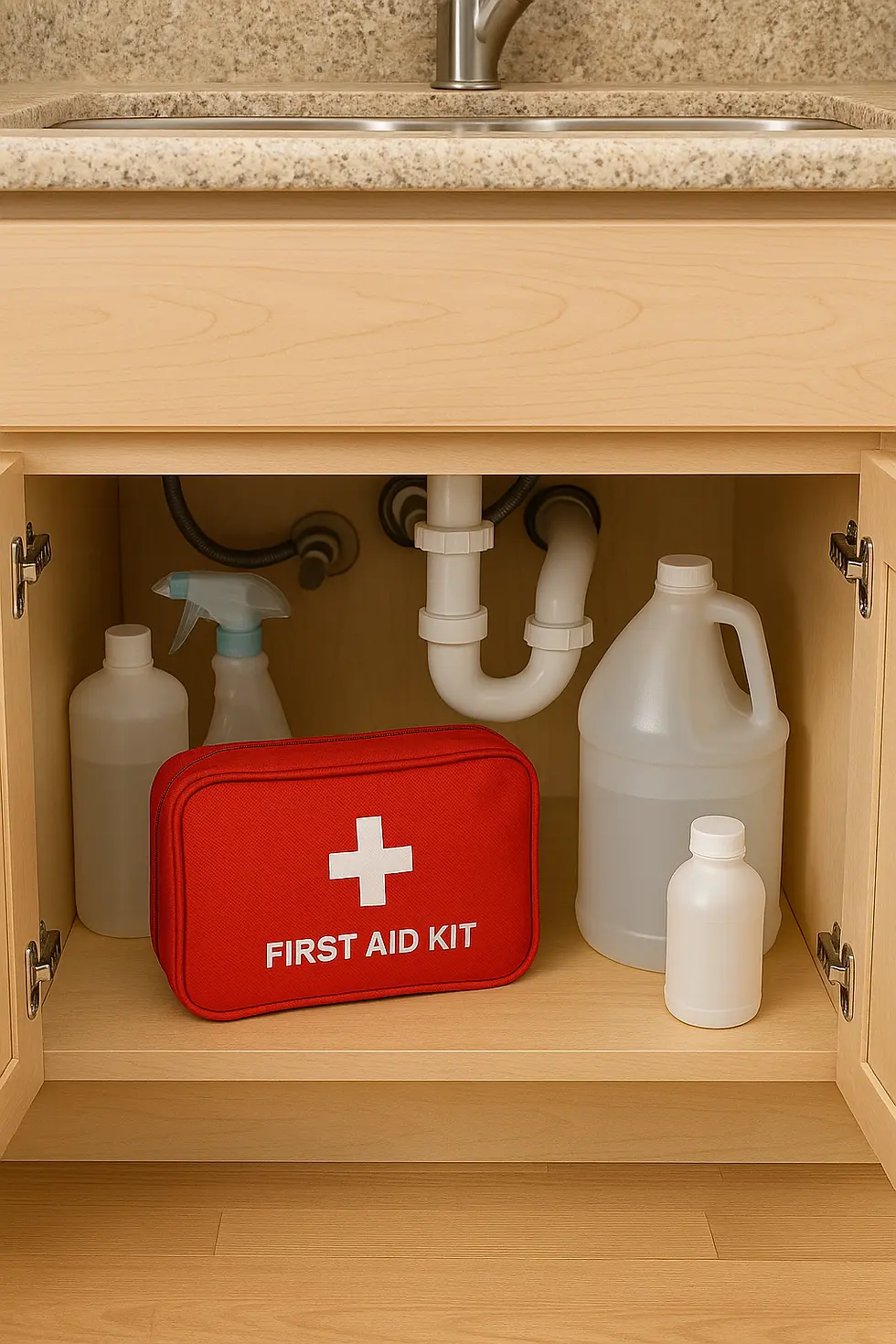What Should Be in a First Aid Kit?
- Jason T

- Jul 24
- 4 min read
Updated: Jul 26

🩺 Nursing Students' Guide: What Should Be in a First Aid Kit?
As future healthcare professionals, one of the most common questions you'll encounter—and should be ready to answer—is: “What should be in a First Aid Kit?”
Whether you're responding at a clinic, in the field, or in your own home, a well-stocked First Aid Kit can be the difference between life and death, infection and safety, or temporary injury versus long-term complications.
From cuts and burns to sprains and allergic reactions, being prepared is part of your professional responsibility. Here's a comprehensive First Aid Kit checklist, plus additional Emergency Kits to keep in your home, car, and workplace.
🔎 Where Should I Keep My First Aid Kit?
According to Alberta Health Services, the best places to store a First Aid Kit are areas where emergencies are likely to happen or where people tend to gather:
Kitchen (under the sink) or
Bathroom cabinet
Near running water for wound cleaning
Make sure your kit is:
Visible
Easily accessible
Stored away from children but reachable in emergencies include a copy of your Emergency Response Plan and MSDS sheets (Material Safety Data Sheets) if you're in a workplace.
NOTE - It is important to include children in their own health, explaining to a child what is in a first aid kit and why it is used can give them confidence that they can also help themselves with minor injuries.

✅ Essential First Aid Kit Checklist (Canadian Standards)
Here’s a recommended stocking list that meets or exceeds CSA (Canadian Standards Association) and Workplace Safety recommendations:
6 × Sterile 2”x2” gauze pads
6 × Sterile 4”x4” gauze pads
2 × Rolls of adhesive medical tape
2–4 × Roller gauze bandages
6 × Triangular bandages (slings, pressure wraps)
12–24 × Adhesive Bandages (various sizes)
1 × EMS-grade scissors
1 × Pair of tweezers
6 × Safety pins
2 × Instant cold packs
2 × Instant heat packs
1 box of Nitrile gloves (Latex-free)
1 × Penlight or flashlight with extra batteries
10 × Antiseptic wipes
Soap & hand sanitizer
Pencil & pad for recording vitals or time
2 × Eye pads or gauze for eye injuries
1 × Digital thermometer
1 × Pocket CPR mask or face shield
1 × Small tub of Vaseline
4 × Small resealable Ziploc bags (6”x6”)
1 × Basic First Aid manual (Red Cross or Heart & Stroke recommended)
🩻 Optional Add-Ons for High-Risk Environments:
Spinal collar & backboard
Burn gel dressings
EpiPen (if trained & permitted)
📚 Sources: Red Cross Canada, Heart & Stroke Foundation, Alberta.ca Emergency Kit Guidelines
🎒 Emergency Supply Kit for Evacuation Scenarios
Also called a "Go-Bag", these kits are designed for rapid evacuations—ideal for natural disasters, rural communities, or high-conflict areas.
Emergency Supply Kit Stocking List:
4L (1 gallon) water per person per day (replace every 6 months)
Portable water filter (e.g. LifeStraw)
Canned, packaged, or freeze-dried food (rotate yearly)
Change of clothing, walking shoes, and rain gear
Compact sleeping bag or foil survival blanket
Toiletries (soap, TP, toothpaste/brush)
Emergency cash
Extra car keys
List of doctors, allergies, & family medications
Photocopies of IDs & health cards
Items for babies, seniors, or disabled family members
Cell phone charger & contact list
Printed directions to hospital & 2 safe meeting places
Map of your region
Long-burning candle & waterproof matches
Regional plant and animal identification guide
🚗 What to Keep in a Vehicle Emergency Kit
Emergencies don’t wait for the perfect place or time. If you commute or travel frequently, keep this Vehicle First Aid & Emergency Kit in your car year-round:
Vehicle Kit Essentials:
Flashlight & hand-crank or battery-powered radio
Booster (jumper) cables
Compact fire extinguisher
First Aid Kit (as listed above)
Bottled water & non-perishable snacks (swap bi-annually)
Emergency blankets
Snow shovel
Glow sticks or road flares
Tire repair kit or portable air pump
Long-burning candle in a deep tin (avoid glass containers)

🧠 Final Thoughts: Be Proactive, Not Reactive
Emergencies are unpredictable, but your preparedness is not. As a nursing student or healthcare professional in training, this is your opportunity to lead by example—whether in your home, workplace, or community.
💡 Ready to Get Certified? Its a social event!
Be prepared. Be confident. Learn First Aid Today & Save a Life Tomorrow with Saving Grace Medical Academy Ltd. Now enrolling: Basic Life Support (BLS) & Standard First Aid CPR-C & AED courses designed for healthcare professionals.
📍 Training for First-Year Nursing Students
Join Saving Grace Medical Academy Ltd. for fully certified, CSA-compliant Standard First Aid CPR-C & AED courses—designed for Alberta’s future healthcare professionals.
Just Remember:
Protect Yourself. Call 911.Don’t Waste Time.
RESOURCES:

Author - Saving Grace Medical Academy Ltd
Jason T
Retired EMT - Heart & Stroke Foundation Senior Instructor







